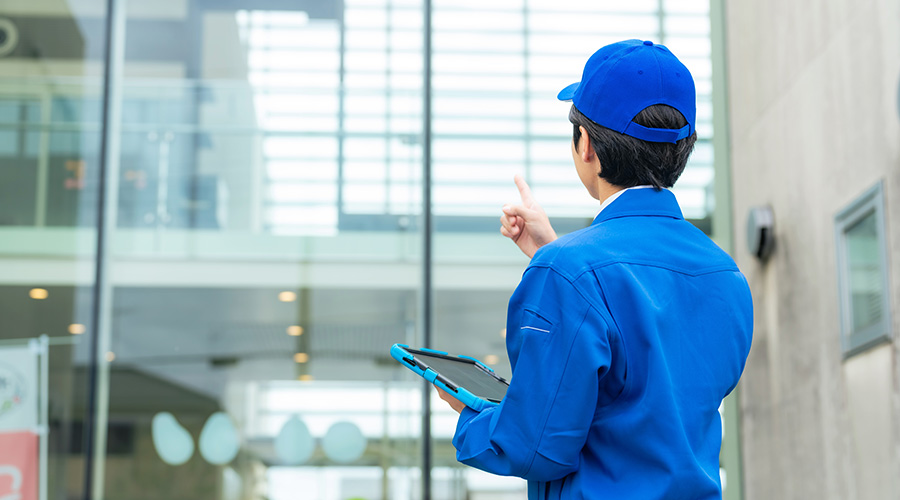Daylighting and Acoustics are Concerns in Office Spaces
In many designs, any enclosed offices, as well as the workstations, feature walls of complete or partial glass. Again, this lets daylight flow through the space. The new headquarters for Mesirow Financial incorporate many office fronts that are made of glass, so overhead lights can be dimmed anywhere from 60 to 80 percent on sunny days. Even when they are, the space remains bright and well-lit, says Krol.
When indirect lighting is used in green designs, it tends to be more diffuse than was the case five or 10 years ago. One example can be seen in the new offices for HOK, says Colin Rohlfing, sustainable design leader with the firm. The light coming from the overhead light system "bounces off the wall and spreads further into the space." As a result, fixtures can be spaced about 20 feet apart, rather than 12. That saves on the number of fixtures needed, reducing installation costs.
To complement the overhead lights, most sustainable office designs provide task lights at employees' workstations. Putting light right where it's needed is more efficient, and also allows employees to take ownership of the space. "When you feel like your station is yours, you feel better and more productive," says Moylan. In fact, researchers at Carnegie Mellon University reviewed a number of studies comparing the technical characteristics of buildings, such as lighting and ventilation, to productivity levels. They found that increasing the control employees could exercise over their lighting boosted productivity between 2.3 and 15 percent.
The same researchers also found that increasing employees' control over the ventilation in their area enhanced productivity by up to 11 percent. A case in point is the new headquarters for the Audubon Society, which is in a retrofitted industrial warehouse that boasts high ceilings and windows on all four sides. The HVAC system features an underfloor delivery system with natural convection, and was designed so that all employees can control the air into their workspaces, Jacoby says. "If you give people control over the temperature, make the air fresher, and if they can turn their light on or off, they're generally more productive."
Similarly, the newly renovated HOK offices feature a significant improvement in indoor air quality, says Rohlfing. At the company's old offices, it wasn't uncommon to find a number of employees either sneezing or coughing. In addition, the air would be cooler some days, and hotter on others. In contrast, the new building features a more robust ventilation system, along with greater use of daylighting. The result? Based on surveys, employees' thermal comfort has jumped about 20 percent, Rohlfing notes.
Sounding Off?
One concern expressed by many employees upon a move to an open office design is the likely impact on acoustics. Enclosed offices, for all their shortcomings, tend to be fairly quiet. Almost by definition, that's not the case in open offices. As a result, the use of quality acoustical materials and soundmasking systems often is critical.
The new Audubon headquarters incorporates a recycled paper sound-control system on the ceiling, Jacoby says. While employees can hear the people they're talking with, it's difficult to understand conversations taking place more than a few feet away.
To compensate for the higher ratio of open area at Novo Nordisk's new offices, the design includes rooms that can be used by employees who need "heads-down quiet time," says Brian Brooks, project architect. In addition, workspace partitions were beefed up, increasing from two to four inches. A soundmasking system in the open areas also helps provide a cover for any conversations underway.
Early feedback on projects shows that the new workspaces are having a positive impact on productivity. At Novo Nordisk, for example, anecdotal information is indicating that the ability to collaborate more easily is helping employees get new drugs to market more quickly. "That means a lot of money," says Mark Duckett, studio director with KlingStubbins.
Attracting and Retaining Talent
Along with productivity, it's not unusual to find that sustainable workplaces also boost employee retention and the ability to attract the best talent. "A lot of the younger generation really values sustainability," says Moylan.
The 2002 Report of the Green Building Alliance, "Shades of Green," supports this theory. According to the report, when PNC Realty Services moved into a LEED Silver certified building in Pittsburgh, absenteeism and turnover both dropped. In fact, voluntary terminations decreased by 83 and 57 percent in two different business units, the report noted.
Similarly, 40 percent of the respondents to a 2007 survey by the consulting firm Deloitte, "The Dollars and Sense of Green Retrofits," said that green retrofits significantly increased their ability to attract talented employees. In addition, nearly one-third said that the retrofits significantly increased their ability to retain talented employees.
The information emerging on the correlation between sustainable design and productivity indicates that the link is a positive one. As more designs are completed and more studies done, it's likely that the connection between the two will become clearer and stronger.
Karen Kroll, a contributing editor for Building Operating Management, is a freelance writer who has written extensively about real estate and facility issues.
Related Topics:













